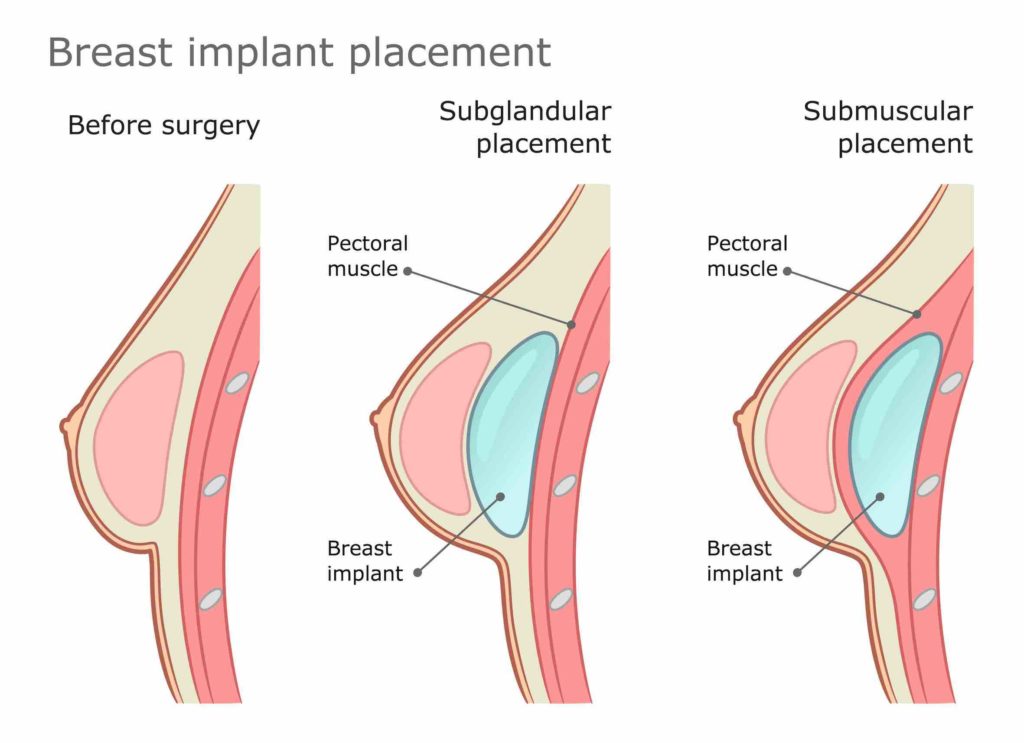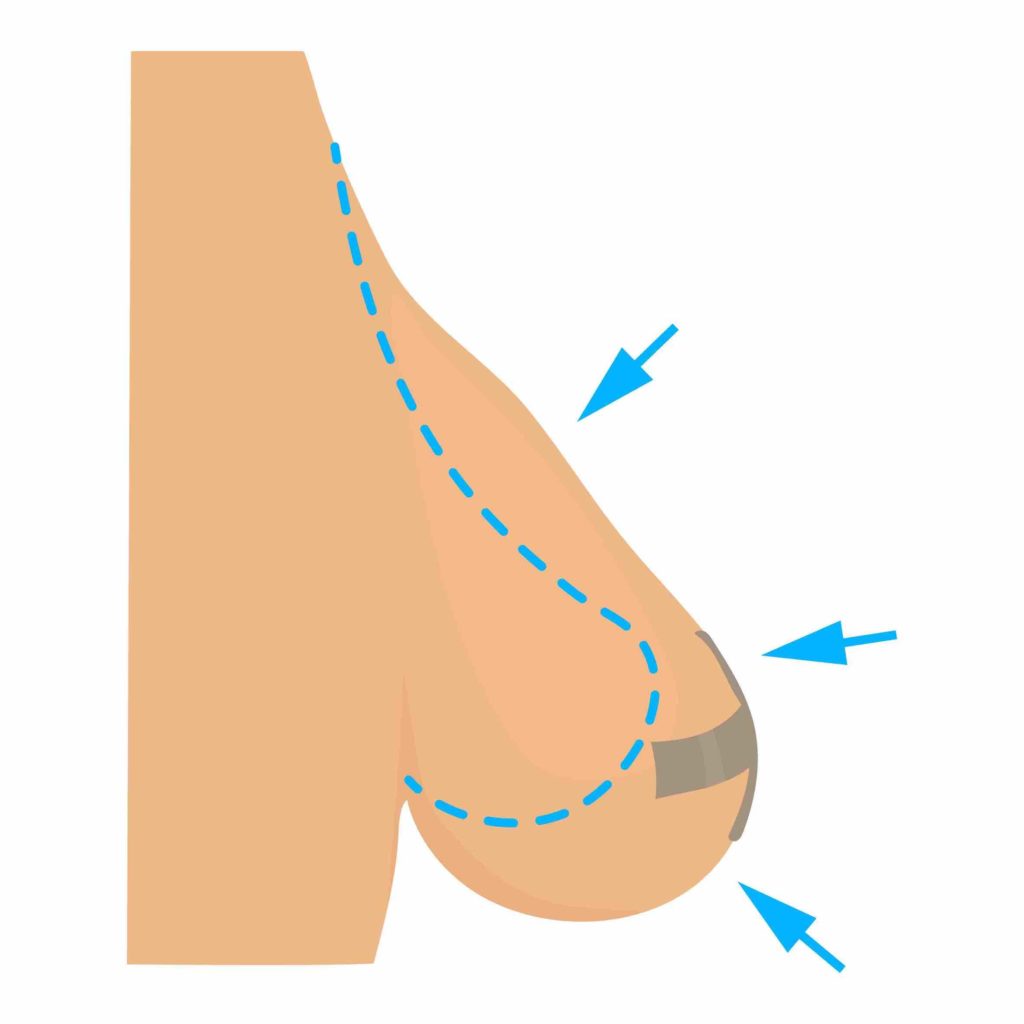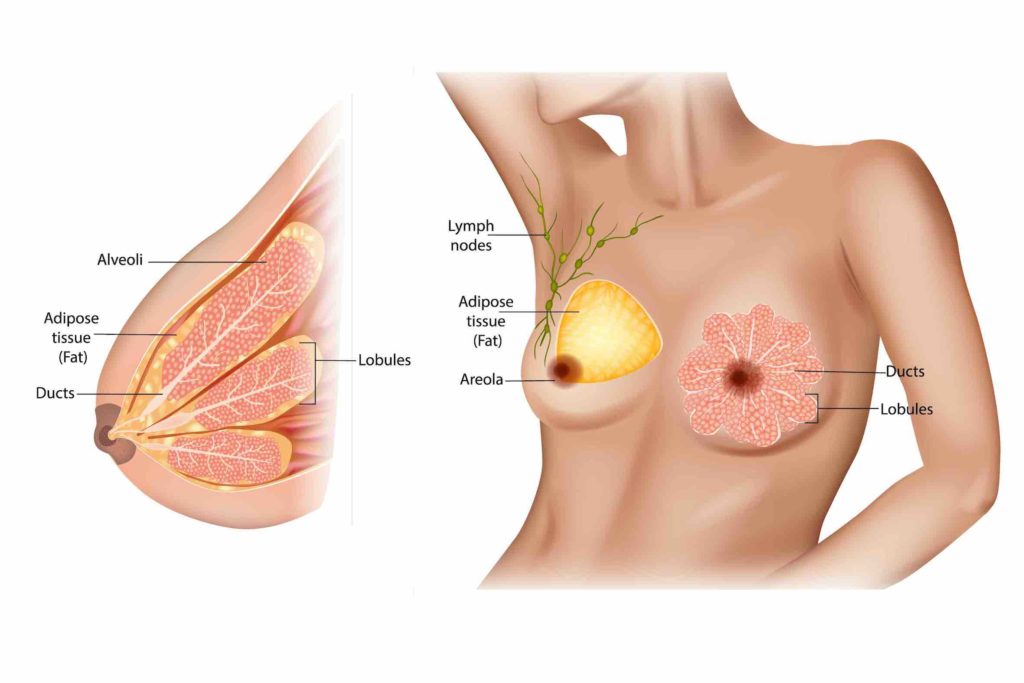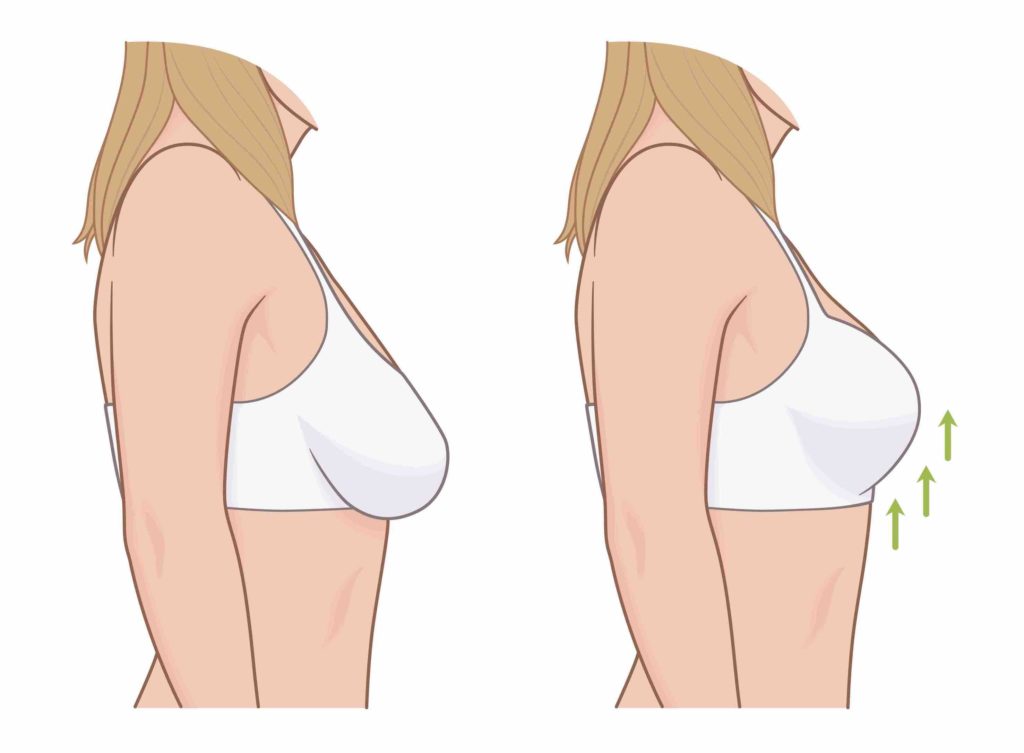It’s a common question that many women have! Can you breastfeed with implants? The answer is yes, you can generally breastfeed with breast implants. Yet, there are a few things to consider. In this article, we will discuss breastfeeding with implants. We will also answer all your questions about breastfeeding and plastic surgery!
The Summary – Breast Feeding with Implants
Breastfeeding after breast implants is possible. But it depends on the size and placement of the implants. Most women’s milk production is not affected by breast implants. Yet others may experience having less milk supply.
Physical Changes
After breastfeeding, it’s normal for your breasts to fluctuate in size and shape. Your implants aren’t affected by breastfeeding. But your breast size and shape may change as the tissues expand and shrink. We will discuss changes to breast implants after pregnancy later in this article.
Breastfeeding with Breast Implants – Is It Possible?
Breast augmentation and breastfeeding can be a common concern for many women. Here’s what you need to know about breast feeding with implants.
Breast augmentation, breast lift, and breast reduction procedures all have the potential to affect nerves and ducts within the breast. This can impact lactation. And some procedures have more of an effect than others. As a result, getting a boob job after pregnancy (breast augmentation) is generally recommended as the best approach. We often recommend waiting until you’re done having children to pursue these procedures.
We also understand that this isn’t always possible. You may have had breast implants before having children. Therefore, it’s important to understand that you may have some difficulty breastfeeding. This is due to the fact that your milk ducts and nerves may become compressed. The size and weight of your breast implants influence this possibility.
Please keep in mind that some women are unable to produce milk, with or without breast implants.
A 2019 study presented in the Annals of Plastic Surgery (Journal) concluded:
- A woman with aesthetic breast implants has a 75% chance of breastfeeding if desired, regardless of the type and volume of the implant and the surgical approach. She has an 82% probability of breastfeeding with retromuscular implants and 17% with retroglandular implants.
This suggests that placement is important when breastfeeding after breast augmentation.
Breast Implant Placement Options

There are two main types of breast implant placement: above or below the muscle. There are some differences that you should be aware of. Breastfeeding with implants is largely impacted by where the implant is placed.
There is a risk that breast implants can affect milk flow. This is because implants can compress the milk ducts, and not because the surgery itself disrupts them. For breast implants and breastfeeding, the risk is higher with above-muscle implants.
Over the Muscle
Over-the-muscle implants (also called retroglandular or sub-glandular implants) sit behind the breast tissue and in front of the pectoral muscle. Being in this position, they can compress the milk ducts and nerves. This means they have a higher risk of causing difficulty with breastfeeding.
Under the Muscle
Under-the-muscle implants (also called retromuscular or submuscular implants) sit below the pectoral muscle and offer more support to the breast. As a result, they are less likely to cause compression of the milk ducts and nerves. This means that women with under-muscle implants have a better chance of breastfeeding.
Where possible, Dr Doyle prefers to place breast implants under the muscle. This is because it looks more authentic, is less likely to cause complications, and because it’s more conducive to breastfeeding.
If you’re considering breast implants and are hoping to breastfeed in the future, we recommend discussing your options with a specialist plastic surgeon like Dr Doyle.
Breast Surgery and Breastfeeding
Certain types of breast surgery can make it more difficult to breastfeed. These include:
- Breast reduction surgery
- Inverted nipple surgery
- Breast lift surgery
- Mastectomy
In most cases, the surgery won’t impact your milk production or interfere with your milk ducts.
For example, if you’ve had a breast augmentation, your chances of being able to breastfeed with implants are quite good. This is because, during breast augmentation, the milk ducts themselves are generally not altered. Though it is important to remember that a large implant can cause the compression of milk ducts and make breastfeeding harder.
For inverted nipple surgery, the procedure itself shouldn’t affect your ability to breastfeed. Yet, the surgery may damage the milk ducts. The more experienced a surgeon is, the less likely this outcome is.
Mastectomy is a more serious type of breast surgery and usually results in the complete removal of the breast tissue. This means that it is very unlikely that you’ll be able to breastfeed after having a mastectomy.
If you’ve had a breast lift or breast reduction surgery, you may have difficulty breastfeeding as these procedures involve repositioning the nipple. As a result, it’s possible that surgery can damage the milk ducts and nerves. This means that some women who have had a breast reduction may be less able to breastfeed.
Can You Breastfeed After a Breast Reduction?

It might be possible for you to breastfeed after breast reduction.
Breast reduction surgery involves repositioning the nipple/areola complex. The risk of milk duct damage happens when the areola is made smaller and moved to a higher position. As a preventative measure, Dr Doyle always aims to keep the blood supply, nerves and milk ducts intact.
Research studies have found that when the nipple-areola complex stays attached during breast reduction surgery, 100 per cent of women were able to breastfeed. When it is partially intact, breastfeeding success rates are 75 per cent. And even when the nipple complex is completely detached, women were able to successfully breastfeed 4 per cent of the time.
However, while this article deemed a 100 per cent possibility of breastfeeding after breast reduction (if the nipple remains attached), it’s not possible to guarantee it. Dr Doyle informs all patients of the risk of not being able to breastfeed after surgery. Breast reduction and breastfeeding can carry a risk that all patients face.

Can You Breastfeed After a Breast Lift?
Yes, it is possible to breastfeed after a breast lift. But the surgery may make it more complicated than if you hadn’t had the procedure. Like breast reduction, the nipple and areola usually get moved during the surgery, which can damage milk ducts and nerves. Therefore, some women who have had a breast lift report challenges with breastfeeding.
Tips to Increase Milk Supply
If you’re not able to breastfeed or are having issues with milk production, here are a few things that may help increase your output:
- Pump regularly
- Take lactation supplements
- Eat a healthy diet
- Drink plenty of fluids
- Stay well-rested
If you are having trouble, please don’t be too hard on yourself. You are still providing your baby with the nutrients they need, even if it’s not in the form of breast milk.
How to Fix Breast Ptosis After Breastfeeding?

Many women are concerned about their breasts after breastfeeding. This happens because the milk-making process creates denser tissue in your breasts. Once you stop breastfeeding, the fatty and connective tissues in your breasts may change position. If your breasts have grown quite large whilst breastfeeding, as they shrink, they can appear lower than before.
It’s common for boobs after breastfeeding to sit lower but there are a few things you can do to help improve the situation:
- Wear a supportive bra: A good quality bra can help support your breasts and improve their shape. Look for bras with underwire and wide straps for the best support.
- Exercise: Building up the muscles in your chest can help improve your breast formation. Try doing some pushups, chest presses, and other exercises that target your pectoral muscles.
- Consider surgery: In some cases, breast ptosis after breastfeeding is due to excess or stretched skin. In these cases, breast augmentation or breast lift surgery after breastfeeding may be the best option.
No matter what you choose to do, it’s important to remember that breast ptosis is a common issue after breastfeeding. Even after breast implants and pregnancy, many women find that their breasts return to their pre-pregnancy appearance over time. If you’re concerned about your breast appearance, talk to your doctor or a specialist plastic surgeon. They can help you decide if a breast lift after breastfeeding is the best course of action for you.
FAQs – Breast Feeding with Implants
What Do Implants Look Like After Breastfeeding?
Breast implants after breastfeeding look the same as they did before. The implant itself is not affected by breastfeeding. Yet, some women find that their breasts change shape after nursing. This is due to the loss of skin elasticity that happens during pregnancy and breastfeeding. You may have excess skin, or your breast implants may appear lower than before.
If this concerns you, breast implant replacement surgery may offer a suitable solution.
How to Get Breasts Back After Breastfeeding?
You may not be able to get your breasts back to the way they were before you breastfed. However, the size and shape of your breasts may return over time.
This process can take 6 months to a few years, so it is important to be patient. If, after a few years, you are dissatisfied with the appearance of your breasts, surgery may be a good option.
How Long After Breastfeeding Can You Get Breast Implants?
Most doctors recommend waiting at least six months after you stop breastfeeding. This gives your body time to recover from pregnancy and nursing.
It’s important to wait until your breasts have reached their final size and shape before getting implants. This can help prevent the need for future surgeries.
Can You Breast Feed With Breast Implants?
Yes, you can breastfeed with breast implants. But some women find that their milk production is lower than it would be without implants.
You’ll likely have more success if your breast implant is underneath the muscle.
Will Breastfeeding Ruin My Implants?
No, breastfeeding will not ruin your implants. Breastfeeding may cause your breasts to change shape, but it will not affect the implant itself.
In some cases, women find that their breast implants move after breastfeeding. This is more likely to happen if you have a history of smoking or if you have very large breasts. If this happens, you may need surgery to reposition the implants.
Can Breastfeeding with Breast Implants Hurt My Baby?
No, breastfeeding with breast implants does generally not harm your baby. The risk of breast milk contamination from implants is low.
Even with a ruptured breast implant, silicone should not leak from the breast capsule. If you’re concerned about breastfeeding with a ruptured implant, we recommend getting an MRI and asking your plastic surgeon for advice.
Next Steps
We hope this article has been helpful in answering your questions about breast feeding with implants. If you have any other questions or would like to schedule a consultation, please call our clinic or enquire through our website.
References
- Impact on Breastfeeding According to Implant Features in Breast Augmentation: A Multicentric Retrospective Study Annals of Plastic Surgery (Journal)
- The impact of breast reduction surgery on breastfeeding: Systematic review of observational studies, Roni Y. Kraut, Erin Brown, G. Michael Allan

